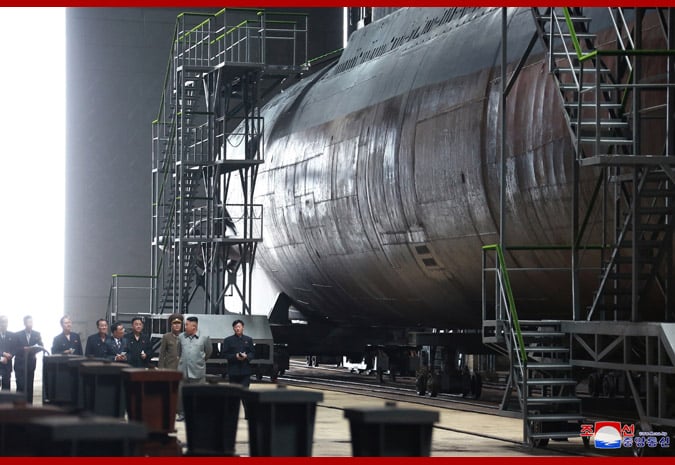On October 2, North Korean strategic forces launched a medium-range ballistic missile from a naval platform, according to the official North Korean agency NKCA. The missile would have seen its trajectory modified in order “not to threaten the countries in the area” according to the same press release. This test took place a few days before the meeting between the American and North Korean authorities, scheduled for October 5, and which should allow the resumption of the negotiation protocol on the subject of potential disarmament of the country's offensive nuclear capabilities.
Japanese authorities, who saw a part of this missile fall in their exclusive economic zone, said they had followed the test of the missile, which reached an apogee at an altitude of 900 km, and believe that the missile could reach a maximum range of 2500 km, putting the entire Japanese territory, but also the Island of Guam, within range of a North Korean attack. On the other hand, if they confirmed that the missile had indeed been launched from a naval platform, they cannot determine whether the firing took place from a submarine, or from a platform. of tests. The international community strongly condemned this test, which violates United Nations Security Council resolutions. But, for the moment, neither the State Department nor President Trump have commented on the subject, nor have they indicated whether this test calls into question the bilateral meeting of October 5.

North Korea carried out several ballistic missile launches over the past 2 months, without us really knowing what political objectives were targeted by the strong man in Pyongyang. According to the information transmitted by NKCA, and the accompanying photo of the shot, it appears that the missile, identified as a Pukkuksong-3, was fired from an underwater launcher. It therefore constitutes an important good capability vis-à-vis the Pukkuksong-1 or NK-11, North Korea's previous submarine-launched ballistic missile (SLBM), the last test of which dates back to 2017, and whose projected range did not exceed 1300 km. In addition, the Pukkuksong-1 had suffered numerous failures during its test campaign of 12 launches from October 2014 to February 2015.
With this new test, and this new missile, Kim Jong Un therefore puts himself in a position of strength against the United States, as well as against South Korea in Japan, in the negotiations which must take place. Today, there are only 7 countries with the capacity to implement SLBMs, including the 5 permanent members of the United Nations Security Council, India and North Korea. Even though North Korean submarines are considered obsolete and very noisy, the fact of having such a capacity poses a very significant threat of response to a possible aggressor, even if legitimate, by making the success of preventive strike strategies intended to decapitate the State and the means of response more improbable. from the country.

In fact, between the semi-ballistic trajectory missile tests of recent months, and that of the Pukkuksong-3 missile, Kim Jong Un has clearly positioned North Korean nuclear capabilities, both in the minds of American negotiators and public opinion. To see, from now on, how he intends to “valorize” this, through of a very ambitious negotiation, or through military opposition, as in the last 70 years.
